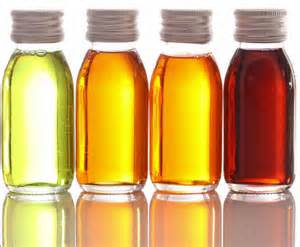










What Are Essential Oils
For as long as we know, people have been distilling and otherwise processing certain plant materials to extract their powerful healing essences. The word chemistry comes from the Greek word chemia, meaning plant juice. In turn, according to some scholars, chemia may derive from the Persian word Kimiya, which referred to a group of Chinese tonic herbs.
In medieval Latin, Paracelsus referred to the oils he distilled from medicinial plants as the quinta essential - the quintessence of the plant - and that is where the term 'essential oil; comes from.
Essential oils are distilled or otherwise processed from very specific parts of particular species of plants. Vascular plants such as flowering species and conifers contain special tissues or vessels for the circulation of fluids. in the case of lavender, the oil is distilled from the flowers, in the case of ginger it's the root, and patchouli it is the leaves. Essential oils are made from flowers, leaves, barks roots, fruts, seeds, grasses and resins. They're produced in practically every country of the world.
Oil of spearmint comes from America, Oil of Chamomile from England, bergamot from Italy, rose from Bulgeria, frankincense from Somalia, pine and cypress from Bhutan and so on. Oils come from specific species of plant groups. For example, there are over three hundred varieties of Tea tree in Australia, but only a few produce oils with medicinal properties. There are an estimated half-million species of flora in the world, of which about three hundred produce an essential oil which is used in modern aromatherapy although, of course, traditional medicine and shamanism throughout the world utilizes many more, whose properties we do not yet know.
Essential oils are examined in various ways, particularly in terms of chemistry by gas chromatography and the mass spectrograph. Although over 1,000 compounds have been found in essential oils, there are many compounds which have yet to be isolated, named and understood. These unknown compounds tend to be 'disappeared' by the literature, which concentrates on what we do know.
Long list of components in oils may look very impressive but what science doesn't tell us is that if all the known chemicals were mixed together in a pot, they would not make the essential oil they are trying to copy. Something vital is missing, the question is, 'what?'.
Reductionism, with essential oils' doesn't work. Tea tree oil is powerfully antimicrobial, but its two main components - terpinen-4-ol (40 per cent volume) and gamma terpinene (28 per cent) are much less so. It is the synergistic effect of all the components that makes an essential oil what it is. This is why there isn't a chemist in the world who can tell you how essential oils work. In a rose oil, for example, there may be over 100 compounds, some known and some not, and figuring how they all work as an integrated unit is not as easy. Essential oils are complex chemical structures, still beyond the powers of chemical analysis.
As individual oils are so mysterious, imagine the difficulty in analysing mixtures of oils. But blends of different oils are used every day by millions of people all over the world. Indeed, complex blending has been a feature of herbal life for as long as we know, and for the mdicine men and women and shamans working to help people around them know, it is not only individual plants that are interesting, but the synergistic effect of them when combined.
Reference : The Fragrant Pharmacy: V. A. Worwood
